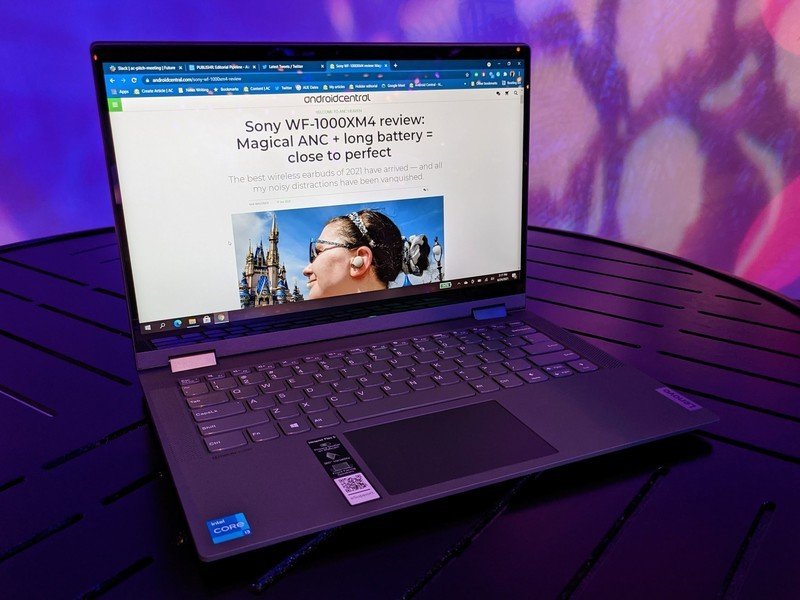
How much money do you really need to spend to get a good Windows laptop? While Best Windows Laptop guides across the net are filled with $1,500to $3000 ultrabooks and beastly gaming laptops, you don’t need to spend even half that number to get a good experience these days. The quality is still too unpredictable in the sub-$400 market to reasonably recommend a Windows laptop over the best Chromebooks outside specific circumstances, but in the $450 to $700 segment, there’s fierce competition for your money and your primary PC. These are the best cheap laptops you can buy today.
What are the best cheap laptops?
When it comes to cheap laptops, it’s all about finding the features you want most — and the features you’re willing to sacrifice for it. There are few touchscreen laptops in the cheap category and even fewer 2-in-1s, which helps the Lenovo Flex 5 (14″) stand out all the more. You get a good touchscreen — except in sunlight, where all but the Microsoft offerings wash out immediately — you get great specs whether you opt for AMD or Intel processors. Both the ports and battery life are more than adequate to be your primary computer. The Ryzen 3 model starts at $400 with a 128GB SSD, though only 4GB of RAM. That’s quite the price performer if you can work with 4GB of RAM, but I know most of us can’t, and so does Lenovo, which is why most come with 8GB instead.
Microsoft has also expanded its offerings in this space over the last year. The Microsoft Surface Laptop Go brings quite the tantalizing package to the table at $550-$650, depending on your RAM and storage choice. It’s also got a touchscreen with 400-nit brightness that you can actually see outdoors. Unfortunately, it’s a clamshell rather than a 2-in-1, but some might actually prefer that.
If you have a hard limit of $400 for your laptop, Samsung has a tantalizing new entry to the market in the Galaxy Book Go. With the Snapdragon 7c Gen 2, Samsung has squeezed over 12 hours of battery life out of this lightweight 14-inch laptop. While it only comes with 4GB of RAM, it’s also the only computer in this list to have two USB-C ports and solely use Power Delivery charging rather than some proprietary AC connector (or the Surface connector). If you’re a USB-C fan like me, we’ve got to wait another generation for the rest of the cheap laptops to hop on this lovely trend, but at least Samsung has learned this trick from its Chromebooks.
Source: Ara Wagoner / Android Central
1. Lenovo Flex 5 (14″)
The best cheap laptop
Bottom line: With a responsive touchscreen, ample ports, front-facing speakers, and latest-gen Intel Core or AMD Ryzen processors, the Lenovo Flex 5 (14″) offers you a premium experience for hundreds less
| Category | Lenovo Flex 5 (14″) |
|---|---|
| Display | 14-inch IPS multi-touch 1920×1080 px, 250 nits |
| Processor | AMD Ryzen 3 5300U-5 5500U 11th Gen Intel Core i3-i7 |
| RAM | 4-8GB DDR4 |
| Storage | 128-512GB PCIe SSD |
| Cameras | 720p |
| Charging | 65W (AC and Power Delivery) |
| Battery | 52.5Whr |
| Ports | 1x USB-C (USB 3.2 Gen 1) 2x USB-A (USB 3.2 Gen 1) HDMI 1.4b SD card reader Audio combo jack |
| Dimensions | 321.5 x 217.5 x 17.9mm |
| Weight | 1.5kg |
Pros:
- 14-inch 1080p touchscreen
- Available with Intel or AMD chipsets
- USB-C port with 65W Power Delivery
Cons:
- Screen washes out outdoors
- Intel models get expensive
The Lenovo Flex 5 (“14) is about as good as it gets for a laptop under $700. You get a 1080p touchscreen 2-in-1 that can adapt to however and wherever you work — so long as it’s indoors, the 250-nit brightness washes out outside — loud up-firing Dolby speakers to ensure your music or video isn’t muffled by wherever you’ve placed the laptop, and there’s plenty of power and battery to last you a full workday with only the briefest of top-offs during your lunch break.
While the screen washes out outside, it’s still one of the better screens here in a non-surface laptop, and having a touchscreen makes it so much easier to interact with games or apps than using the touchpad for every little click. The keyboard is a teensy bit mushy, but it’s comfortable enough to type on with only the briefest of transition periods to get used to Lenovo’s particular layout for the function row. Not every model has a backlit keyboard, but most do.
There’s plenty of ports here for your pleasure, but the most important one is the USB 3.2 Gen 1 Type-C port with 65W Power Delivery charging. This means that you’re not stuck lugging around a proprietary charger like most budget laptops still use; you can use any Power Delivery charger you want.
There’s also a half-dozen different Flex 5 configurations to choose from, as you have multiple price points for both the 11th Gen Intel models and the more cost-effective AMD models, starting with a $410 Ryzen 3 that would be perfect except for its 4GB of RAM. You’ll want at least 8GB of RAM no matter which processor you pick, though the Ryzen 5 model comes with twice the SSD storage at almost a hundred dollars less than the Intel Core i5. So whichever processor brand you prefer, there’s a Flex 5 for you (and your budget).
Best overall
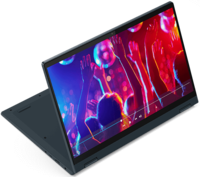
Lenovo Flex 5 (14″)
All the features you want and the power you need.
Lenovo gets almost everything right with its 14-inch 2-in-1, including leaving the processor choice up to you.
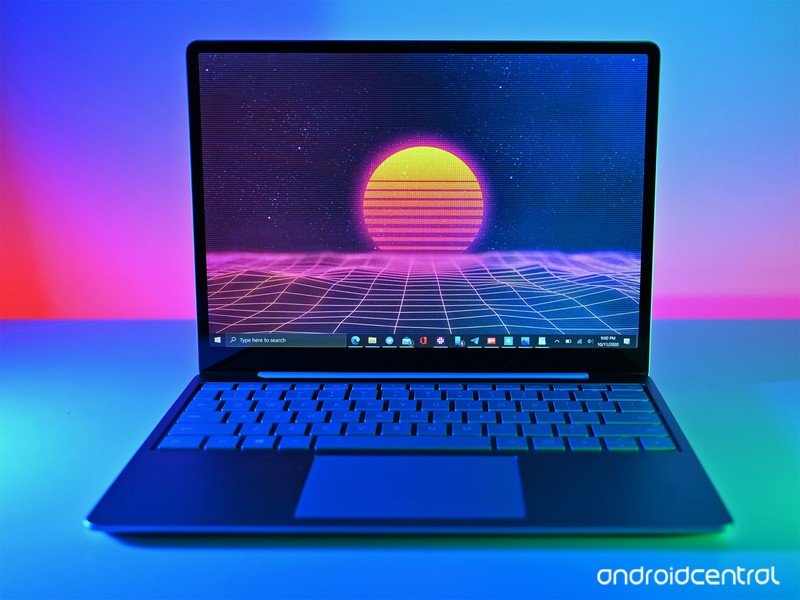

2. Microsoft Surface Laptop Go
The best Microsoft laptop on a budget
Bottom line: Get Microsoft’s vision for Windows in a much more affordable package while still getting a bright, beautiful touchscreen, a powerful i5 processor to get your work done without overheating, and Power Delivery charging via USB-C in addition to the classic Surface Connect port.
| Category | Microsoft Surface Laptop Go |
|---|---|
| Display | 12.45 inch PixelSense multi-touch 1536×1024 px (3:2), 400 nits |
| Processor | 10th Gen Intel Core i5-1035G1 |
| RAM | 4-8GB LPDDR4 |
| Storage | 64GB eMMC or 128-256GB SSD |
| Cameras | 720p |
| Charging | 60W (Surface Connect and Power Delivery) |
| Battery | 39.7Whr |
| Ports | 1x USB-C 1x USB-A Audio combo jack Surface Connect |
| Dimensions | 278.18 x 205.67 x 15.69mm |
| Weight | 1.11kg |
Pros:
- Microsoft’s distinct design
- Nice-looking 400-nit touchscreen
- Wonderful trackpad
Cons:
- Comes in S Mode
- Avoid the 4GB RAM models
- No backlit keyboard option
When it comes to Windows laptops, the first place many look is to the Surface line since that’s Windows done the way Microsoft intended — and Microsoft doesn’t add on dozens of pre-installed bloat apps like Acer, ASUS, and Lenovo tend to do, especially on their cheaper laptops. While most Surface laptops and tablets are $1000+ easy, Microsoft did make the Surface Laptop Go last fall so that it’d have a more affordable offering for those seeking a reliable experience without the premium price tag.
The Surface Laptop Go is a pretty great budget laptop, with a 12.45-inch touchscreen — resolution is only 1536 x 1024 pixels, but it’s okay at this size — and Microsoft’s masterful touchpad and keyboard. The keys aren’t backlit, but they’re comfortable to type on for long periods of time. The design here is pure, minimalistic Microsoft, with a polycarbonate shell aside from the aluminum lid. It comes in three colors, including a beautiful Arctic Blue and a rose gold-ish Sandstone.
Microsoft learned from the mistakes of the Surface Go, its first budget offering, and gave the Laptop Go a 10th Gen Intel Core i5. So, the Laptop Go has plenty of power — you’ll still want 8GB of RAM, though — but keep in mind that since this is a smaller laptop with only one fan, so it could get warm during longer sessions. Windows 10 Home here comes in S Mode, which is easy enough to turn off but still annoying all the same.
The battery here is advertised as “Up to 13 hours,” but in actual real-world use, you’re probably only going to get 7 to 9 hours. When you recharge, you can use the Surface charger — or use 60W Power Delivery charging over USB-C because those are much easier to find.
Microsoft’s best (on a budget)
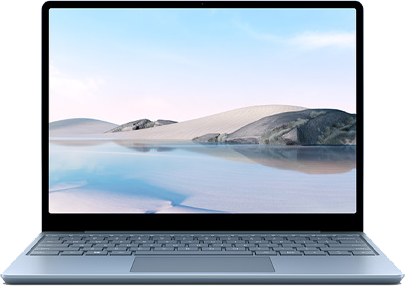

Surface Laptop Go
Microsoft design in a compact, cost-effective package.
With the power of an i5, this sleek 12.45-inch laptop gives you the Microsoft touchpad and keyboard you love.
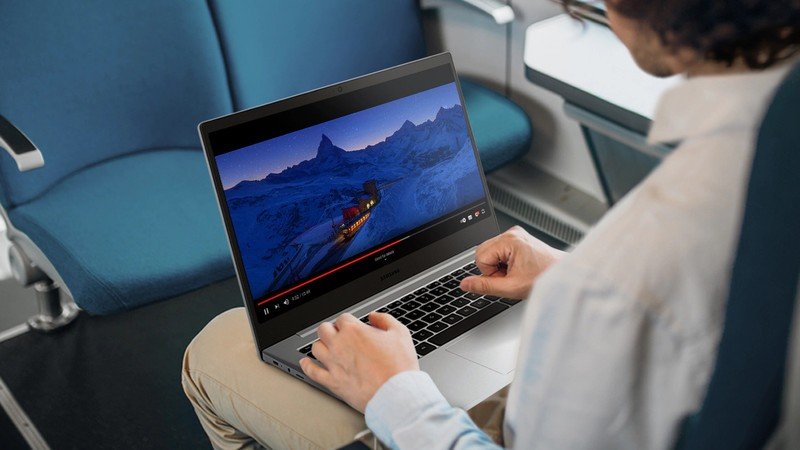

3. Samsung Galaxy Book Go
The best laptop under $400
Bottom line: Samsung is bringing Galaxy style to a more affordable price point thanks to tricks it learned from its Chromebooks and the Snapdragon 7c Gen 2. This improved processor allows you to get schoolwork or light computing done over your long days and longer nights, thanks to battery life that can last 12-15 hours in real-world use.
| Category | Samsung Galaxy Book Go |
|---|---|
| Display | 14-inch TFT non-touch 1920×1080 px, 250 nits |
| Processor | Qualcomm Snapdragon 7c Gen 2 |
| RAM | 4-8GB LPDDR4x |
| Storage | 128GB eUFS |
| Cameras | 720p |
| Charging | 25W Power Delivery |
| Battery | 42.3Whr |
| Ports | 2x USB Type-C 1x USB 2.0 Audio combo jack microSD Optional SIM tray |
| Dimensions | 323.9 x 224.8 x 14.9 mm |
| Weight | 1.38kg |
Pros:
- Very affordable
- Samsung look and integration
- Stellar battery life
Cons:
- Screen is just OK
- Flexes easily
- Only 4GB RAM
It’s still early days for Samsung’s latest budget laptop, but the Galaxy Book Go seems to have defied all odds and logic and become an actually decent laptop that can compete with Chromebooks in both price and performance at $350. I’d still argue there are better Chromebooks at that price, including ones with touchscreens, but if you need Windows and your budget is locked below $500, this is your best bet.
At first glance, the Galaxy Book Go shares much of the same design philosophy as the Galaxy Pook Pro: it’s sleek and minimalistic, with only the Samsung logo on the polycarbonate lid and minimal ports on each side, with one USB-A, two USB-C, a microSD card slot and an audio combo jack.
Inside, you’ll find a 14-inch 1080p non-touch display with a matte finish; like most laptops in this category, it’s fine indoors but don’t expect to use it outside or in uber-bright rooms. The keyboard isn’t backlit, and you may notice some flexing of the chassis if you’re a forceful typer like me, but the hinge has a proper amount of resistance to it so that it won’t fall over every time you move with the Galaxy Book Go in your lap.
The Snapdragon 7c Gen 2 inside here helps the Galaxy Book reach 12 to 15 hours on a single charge, and thanks to those two USB-C ports, we don’t have to worry about some proprietary charger! (Why can’t all budget Chromebooks be this sensible?!) While the 7c Gen 2 isn’t super-powerful, it’ll be fine for casual computing or completing homework, but don’t go thinking you’re going to be able to do any real PC gaming here.
Currently, only the Wi-Fi model with 4GB of RAM is available, and 4GB of RAM might spell trouble for those who tend to use tons of tabs. However, some slightly more expensive models with 5G connectivity (and hopefully 8GB of RAM) are coming soon, so if you’re on the fence, you might wait a couple of months.
Best under $400
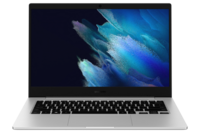



Samsung Galaxy Book Go
This budget laptop punches above its weight.
Leveraging the Snapdragon 7c Gen 2, the Galaxy Book Go defies logic and could be the only sub-$400 laptop worth recommending.
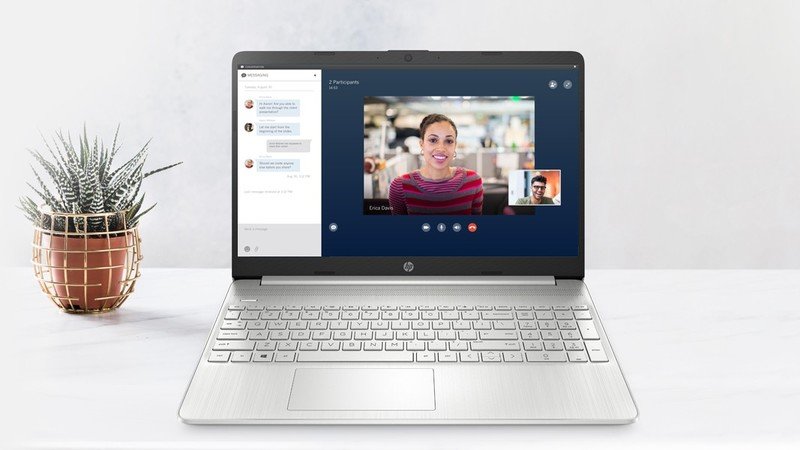

4. HP Laptop 15 (15-dy2021nr)
The best budget big-screen laptop
Bottom line: This 15.6-inch laptop won’t weigh down your backpack or bulk up your briefcase thanks to a slimmer design, but you still get the power of 11th Gen Intel processors and enough battery to last for your all-afternoon-in-bed movie marathon when you’re sick.
| Category | HP Laptop 15 (15-dy2021nr) |
|---|---|
| Display | 15.6-inch IPS non-touch 1920×1080 px, 250 nits |
| Processor | 11th Gen Intel Core i5-1135G7 |
| RAM | 8GB DDR4 SDRAM |
| Storage | 256GB NVMe M.2 SSD |
| Cameras | 720p |
| Charging | 45W (AC adapter) |
| Battery | 41Whr |
| Ports | 1x USB-C (USB 3.2 Gen 1) 2x USB-A (USB 3.2 Gen 1) HDMI 1.4b SD card reader Audio combo jack |
| Dimensions | 358.5 x 242 x 17.9 mm |
| Weight | 1.69kg |
Pros:
- 15.6-inch 1080p display
- Sleek profile
- 11th Gen processors
Cons:
- Non-touch screen
- Screen could be brighter
- Battery is just okay
15-inch laptops and up are usually what I lovingly refer to as LIMOs — laptop in model only — because they’re just too big and bulky to carry around daily. However, the HP Laptop 15 is sleeker, cleaner, and at 1.69 kilograms (that’s 3.7 pounds for us Americans), it won’t weigh down your backpack too much if you’re carrying it to and from work every day — or to and from the couch like I am.
This 15.6-inch 1080p screen isn’t a touchscreen, but it should be decent enough to use indoors and in the shade for spreading out three or four windows at a time or for split-screening that quarterly report and the latest Twitch stream — I mean your research notes. Of course, 250 nits max brightness means it’ll be hard to read it outdoors, but chances are if you’re taking a laptop outside, it’s a smaller, more portable size.
Inside sits an 11th Gen Intel Core i5 and 8GB of RAM to keep up with your workload, schoolwork, and even some gaming with the built-in Intel Iris XE graphics. The battery should run you about 7 hours when you’re working, which doesn’t sound great but is actually pretty decent for a 15-inch laptop. You get the bevy of ports you’d expect — two USB-A, one USB-C, HDMI, an audio combo jack, an SD slot, and one port for the barrel-plug AC adapter — and when recharging the HP Laptop 15, you can get from 0-50% in 45 minutes if you need an emergency top-up.
Best big screen
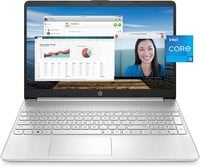



HP Laptop 15 (15-dy2021nr)
Supersize your Windows experience without the bulk.
With a newer ultrabook-inspired design, the HP Laptop 15 will let you spread out all your work without needing a second monitor.
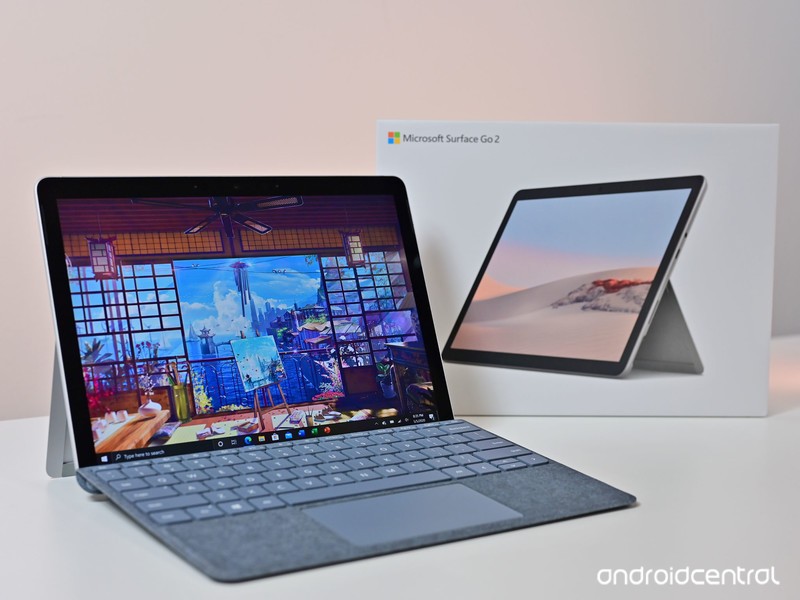

5. Microsoft Surface Go 2
The best detachable
Bottom line: Learning from a decade of Surface detachables — and the abysmal processor in the first Go — Microsoft came back with a slightly bigger Surface Go 2 that actually holds its own thanks to the m3 processor. While the Type Cover will cost you extra, that Alcantara texture and the magnets to keep it in place are worth it.
| Category | Microsoft Surface Go 2 |
|---|---|
| Display | 10.5-inch PixelSense multi-touch 1920×1280 px (3:2), 400 nits Gorilla Glass 3 |
| Processor | Intel Pentium Gold 4425Y (1.7GHz) Intel Core m3-8100Y (3.4Ghz) |
| RAM | 4-8GB |
| Storage | 64GB eMMC or 128-256GB SSD |
| Cameras | 5MP 1080p front 8MP 1080p rear with autofocus |
| Charging | 24W (Surface Connect and Power Delivery) |
| Battery | 27Whr |
| Ports | 1x USB-C microSD card slot Audio combo jack Surface Connect |
| Dimensions | 245 x 175 x 8.3mm |
| Weight | 554g (without Type Cover) |
Pros:
- Bright, beautiful screen
- Compact and portable
- m3 models are quite capable
- USB-C port with Power Delivery and video output
Cons:
- Limited ports
- m3 models get expensive
- Keyboard sold separately
- Pentium models are underpowered
The original Surface Go was a great tablet computer that was held back by underpowered hardware. Finally, Microsoft brought more sensible processors to the Surface Go 2, or at least one sensible processor. The Pentium Gold is barely an upgrade from the original Go, but there’s an 8th Gen Intel Core m3 processor available in the $629 and $729 configurations, and that’s absolutely the version you’ll want if you want to do more than surf the net and maybe play some mobile-level games.
With the m3, you’ll be able to get work done in decent time on the 10.5-inch touchscreen. It gets nice and bright when it needs to, and of course, you can adjust the angle of the screen with the famous Surface kickstand on the back, under which site the microSD card slot if you want to expand your storage. The port selection here is rather limited, just as it is on the Surface Laptop Go, but just as before, you can use the USB-C port for a docking station and/or Power Delivery charging.
Microsoft sells the Type Cover, aka the Surface’s keyboard, separately from the Surface Go 2, and at $130, that brings the $630 m3 Surface Pro up to $760. That said, there are third-party versions to use instead, or if you’re using it at a table, you’ll probably connect a full-size keyboard, so you’re not quite so cramped. Using it purely as a tablet is much better than it used to be on Windows 10 — and it’s going to get even better this fall when the Surface Go 2 gets Windows 11.
Best detachable
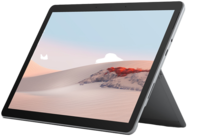



Surface Go 2
Ditch the keyboard when it’s time to play.
With the m3 processor, the Surface Go 2 is capable enough to be your compact daily driver, but accessories can break your budget.
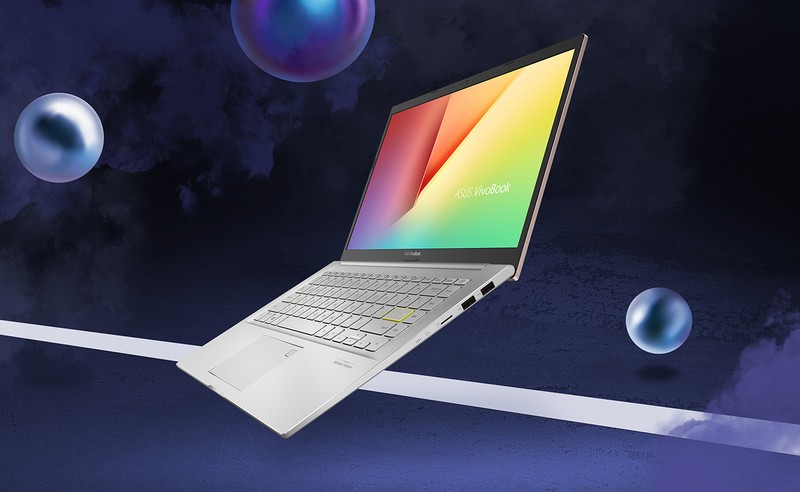

6. ASUS VivoBook 14
The best cheap laptop for business
Bottom line: In the words of the immortal Han Solo, “she may not look like much, but she’s got it where it counts, kid.” The ASUS VivoBook 14 brings you Ryzen 5 power and 8GB of RAM to get your work done quickly on the 14-inch 1080p screen. There’s a fingerprint sensor here for easier secure login and more ports than you can share a USB-C hub at.
| Category | ASUS VivoBook 14 |
|---|---|
| Display | 14-inch LED backlit non-touch 1920x1080p, 220 nits |
| Processor | AMD Ryzen 5 3500U |
| RAM | 8-16GB DDR4 |
| Storage | 256-512GB NVMe PCIe SSD |
| Cameras | 720p |
| Charging | 45W (AC adapter) |
| Battery | 42WHr |
| Ports | 1x USB-C (USB 3.2 Gen 1) 1x USB-A (USB 3.2 Gen 1) 2x USB-A (2.0) HDMI 1.4 microSD card reader Audio combo jack |
| Dimensions | 324 x 215 x 19.1mm |
| Weight | 1.4kg |
Pros:
- Ryzen 5 with Radeon graphics
- Fingerprint sensor
- Backlit keyboard
Cons:
- Not a touchscreen
- Display is only 220 nits
- Color options hard to find
ASUS makes some amazing laptops at the higher end, such as the ZenBook series and the Republic of Gamers laptops, making wonderfully sensible everyday laptops like the VivoBook 14. ASUS offered this laptop in six colors at launch, but I’m afraid that the striking Cobalt Blue and Hearty Gold are getting rather hard to find, though Bespoke Black is everywhere.
The 14-inch screen here isn’t bright by any means, but it will work well in most home offices, schoolrooms, and the dining room between meals when you finally have the house to yourself. The Ryzen 5 offers up plenty of power without the higher price tag of Intel processors, and with 8GB of RAM and 256GB of SSD storage, you should be able to store all your work — or a portion of your gaming library — with ease. We have the same ports as the Lenovo and HP: one USB-C, two USB-A, HDMI, an audio combo jack, and a microSD card slot, since really, who buys full-size SD cards besides vloggers these days?
This model is at the tail-end of its life, so expect discounts to arrive for it as models with newer Ryzen processors, 65W charging, Wi-Fi 6, and a number pad hidden in the trackpad. That is the ASUS Vivobook S413, but since the performance difference isn’t huge, take the $100+ discounts on the old model or wait for the new one to get its first price cuts.
Best for business
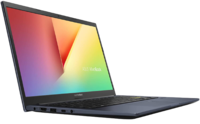



ASUS VivoBook 14
A no-nonsense laptop for no-nonsense people.
ASUS packs in the ports and features you want like a fingerprint sensor, a comfy backlit keyboard, and battery life to last a workday.
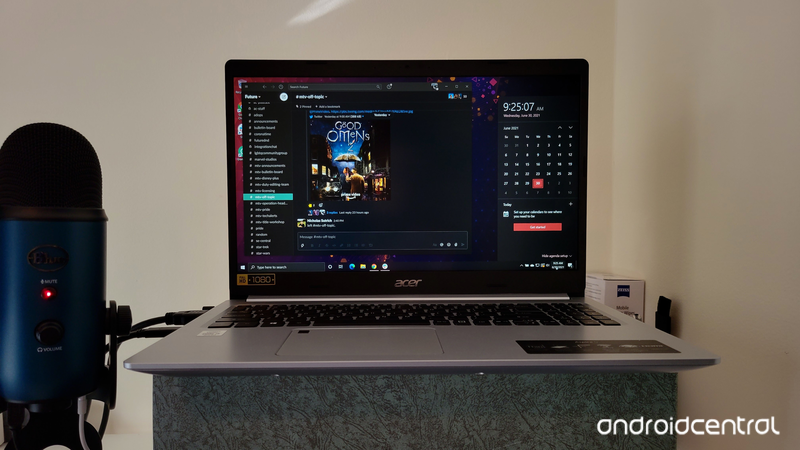

7. Acer Aspire 5
The best to buy on sale
Bottom line: While its screen will certainly not be winning any awards, it’s a big screen that is usable indoors and will let you spread out 2-4 windows easily. You get a full backlit keyboard with a number pad and three USB-A ports in addition to the HDMI, USB-C, and Ethernet ports, so you’ll never need to rely on hubs.
| Category | Acer Aspire 5 |
|---|---|
| Display | DisplaySpecsTKTKTK |
| Processor | 10th Gen Intel Core i5-1035G1 |
| RAM | 8GB DDR4 SDRAM |
| Storage | 256GB NVMe SSD |
| Cameras | 720p |
| Charging | 45W (AC adapter) |
| Battery | 48Whr |
| Ports | 1x USB-C (USB 3.2 Gen 1) 2x USB-A (USB 3.2 Gen 1) 1x USB-A (2.0) HDMI |
| Dimensions | 363.4 x 250.5 x 17.95mm |
| Weight | 1.8kg |
Pros:
- Plenty of power
- Backlit keyboard with number pad
- Fingerprint sensor
Cons:
- Not great non-touch display
- USB-C port doesn’t support charging
- Heavy and bulky for the size
Bigger-screen Windows laptops in the budget range tend to be one of two things: a good laptop with a not-good screen or a not-so-good laptop with a good screen. The Acer Aspire 5 is the former, and I’d much rather direct you towards a good laptop with a mediocre screen. After all, great external monitors are more affordable than ever, but you can’t replace your processor.
The Aspire 5 has a 10th Gen i5 inside to power your work or play. The keyboard is backlit with a full number pad, and there are plenty of ports for plugging in all your peripherals like flash drives or a wireless mouse. There’s a fingerprint scanner embedded in the trackpad, and while I wish the trackpad felt a little more solid, it gets the job done.
The 15.6-inch screen here is not bright. It’s only 1080p — at this size, that resolution doesn’t look great — and it’s got a matte finish that should help it not reflect so much light in bright rooms, but it will still wash out just as quickly as the Lenovo Flex 5 (14″). But the screen is workable, and the solid performance otherwise helps us overlook the display Acer used here.
The best to buy on sale
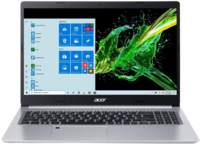



Acer Aspire 5
A solid budget laptop with one glaring flaw.
With solid power and performance in every other category, the Acer Aspire 5 is still worthwhile if you can overlook the screen.
How to pick the best cheap laptop
The quality of laptop you get in this range really boils down to how much or how little you’re willing to spend. The Lenovo Flex 5 (14″) is a fine laptop, but it’s also twice the Samsung Galaxy Book Go price. Backlit keyboards are thankfully becoming more commonplace in this segment, but still, there aren’t many worthwhile 2-in-1s to be found at these prices, which helps the Lenovo Flex 5 stand out more and fit into more lifestyles.
If you need help determining which laptop is the best fit for you, these are the top four things you need to keep in mind.
1. What screen do you want?
The single-most defining aspect of a laptop is its size, specifically its screen size. The bigger your screen is and the higher resolution is, the more expensive the computer becomes. You also pay for features like a multi-touch display or a high-nit brightness screen. The Lenovo Flex 5 has a touchscreen, but it’s not high-brightness. The Surface Go 2 and Surface Laptop Go are both touchscreens and high brightness, and so they’re more expensive even without the more robust ports or power of the other laptops on this list.
So you need to decide how big a laptop you need to work with. The 10.5-inch Surface Go 2 is a bit too small for most people to work on comfortably, but the 12-13.3-inch category is the sweet spot of highly portable yet still a good size to work on. 14-inch laptops have a little more flexibility in how you stretch out your content for multi-window work, but they’re heavier and slightly less portable. Once you get to 15 inches and above, laptops are unwieldy, meant to be used at a desk and only rarely moved around.
2. Do you really need Intel?
If you’re looking to save a few dollars, look for AMD Ryzen models, as they’ll rival Intel processors in raw power while usually costing $75-$150 less. Why would anyone buy Intel in that case? Well, Intel still has more powerful chipsets at the higher end for gaming and the beefiest computers — though AMD has made great strides with the most recent generations — Intel’s x86 platform also has the benefit of being the de facto architecture of the last 30 years. In other words, Intel still has a huge edge on program compatibility.
The biggest downside to Ryzen (and the Snapdragon 7c Gen 2) is that some programs simply aren’t designed to work with AMD processors. You can usually find alternative programs, but if there’s a program that you have to use no matter what for school or work, check that program’s requirements or play it safe with Intel.
3. Do you have a hard limit to your budget?
“Cheap” is a relative term. Some people consider $300 cheap, some people consider $500 cheap, and in the grand scheme of Windows laptops, $750 actually is cheap compared to the ridiculous behemoths out there. Your price limit, processor choice, and screen size might lock in your choices for you pretty quickly. Still, if you have wiggle room in your budget — or if you don’t need to replace your current computer right this second — you can stretch your dollar farther by finding models you like and then waiting for the sales to come.
Retailers like Best Buy, Walmart, and Costco have rotating deals on computers, which tend to heat up around May, August, and November for graduation season, back-to-school season, and the holiday shopping season. That said, if you directly to manufacturer sites like HP, Dell, Lenovo, and Acer, they tend to have sales for weeks surrounding holidays, big or small. Fourth of July? Here are three weeks of sales! Presidents Day? We’ve got a month of deals to save you those Benjamins! Manufacturers will take any excuse to discount and sell their computers, so watch carefully and save big.
Deals also tend to flock up when a current model is about to be replaced. This is great news if you want the Lenovo Flex 5 because its successor, the Flex 5i, should become widely available soon.
4. How much RAM do you need?
While 4GB of RAM is perfectly fine in a Chromebook, the same can’t really be said of Windows. Windows is more resource-intensive as an operating system, and applications like Chrome, Photoshop, and even Excel can eat your memory up once you start getting deep into your work. 4GB of RAM will be passable for those just wanting to do some light browsing and solitaire, but if this is a laptop you intend to do actual work on, 8GB should be the minimum RAM you accept.
Windows 11 moved the minimum RAM requirement from 2GB of RAM to 4GB of RAM, meaning on Windows 11, 4GB is the bare minimum and probably won’t offer a great experience. Futureproof your purchase a little and spend the extra few dollars on extra RAM. While some higher-end laptops allow you to upgrade the RAM on your own, many cheap laptops use soldered-in RAM that you will not be able to replace.
Whatever your budget and needs, the best cheap laptop is out there for you, and those laptops should get even better once Windows 11 arrives this fall. If you’ve been worried about buying a new laptop before Windows 11 arrives, keep in mind that basically, every Windows laptop model that launched in 2020 and 2021 will get the free upgrade. So if you’re buying an Intel laptop, 10th Gen or higher will for sure get the upgrade, and 10th gen laptops are cheap enough that you don’t need to slum it with the older 8th Gen models.
Credits — The team that worked on this guide




Ara Wagoner themes phones and pokes YouTube Music with a stick. When she’s not writing help and how-to’s, she’s running around Walt Disney World with a Chromebook. You can follow her on Twitter at @arawagco. If you see her without headphones, RUN.
We may earn a commission for purchases using our links. Learn more.